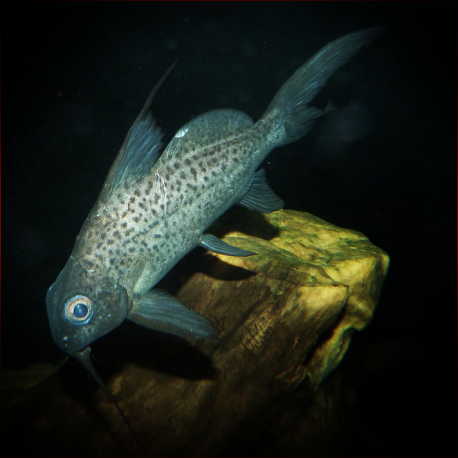More info
Datasheet
| Minimum Tank Size | 430 litres / 113.59 US gallons |
| Maximum Size | 45.0cm / 17.72inches |
| Temperature | 22°C / 71.60°F - 27°C / 80.60°F |
| Hardness | 5-30ºdH |
| pH | 6.0-8.0 |
General Description
Synodontis Schall, known as a "bad boy" of the genus in aquarium circles, is a robust species often mistaken for similar Synodontis species due to its long adipose fin. Growing up to 45.0cm, it is distributed across various African countries and plays a significant role as a food fish in its native habitats.
Aquarium Setup
For housing Synodontis Schall, a tank of at least 430 litres with a dimly lit environment, soft substrate, rocks, driftwood, twisted roots for hiding, and floating vegetation to dim light penetration is ideal. While planting is beneficial, it is not mandatory. The water parameters should be maintained at a temperature of 22-27°C, a pH range of 6.0-8.0, and hardness of 5-30°dH (see table).
Behaviour
This species displays random aggression and should be housed with tankmates capable of holding their ground, such as large Central American and African cichlids, characins, barbs, and loricariids. Synodontis Schall can vary in temperament, some cohabiting peacefully while others are highly territorial. To minimize aggression risks, introduce them as the last fish in a community tank.
Feeding and Diet
Synodontis Schall is a voracious eater and accepts a variety of foods, including live, frozen, and dried options. They particularly enjoy vegetable matter like shelled peas and cucumber, which they rasp at with their lower jaw teeth.
Reproduction & Dimorphism
While not observed in captivity, in the wild, Synodontis Schall breeds in areas of seasonal flooding without parental care. To differentiate sexes, females are plumper, and genital papillae examination is possible for advanced aquarists. Males have pointed and ridged papillae with a visible spermatoduct, while females possess a rounded papillae with the oviduct on the opposite side.
Habitat and Distribution
Synodontis Schall is found in various African countries, including Nigeria, Egypt, Cameroon, and Ghana, inhabiting riverine areas with rich micro-organisms. They prefer habitats with seasonal flooding for breeding and are known as egg scatterers in these environments.

